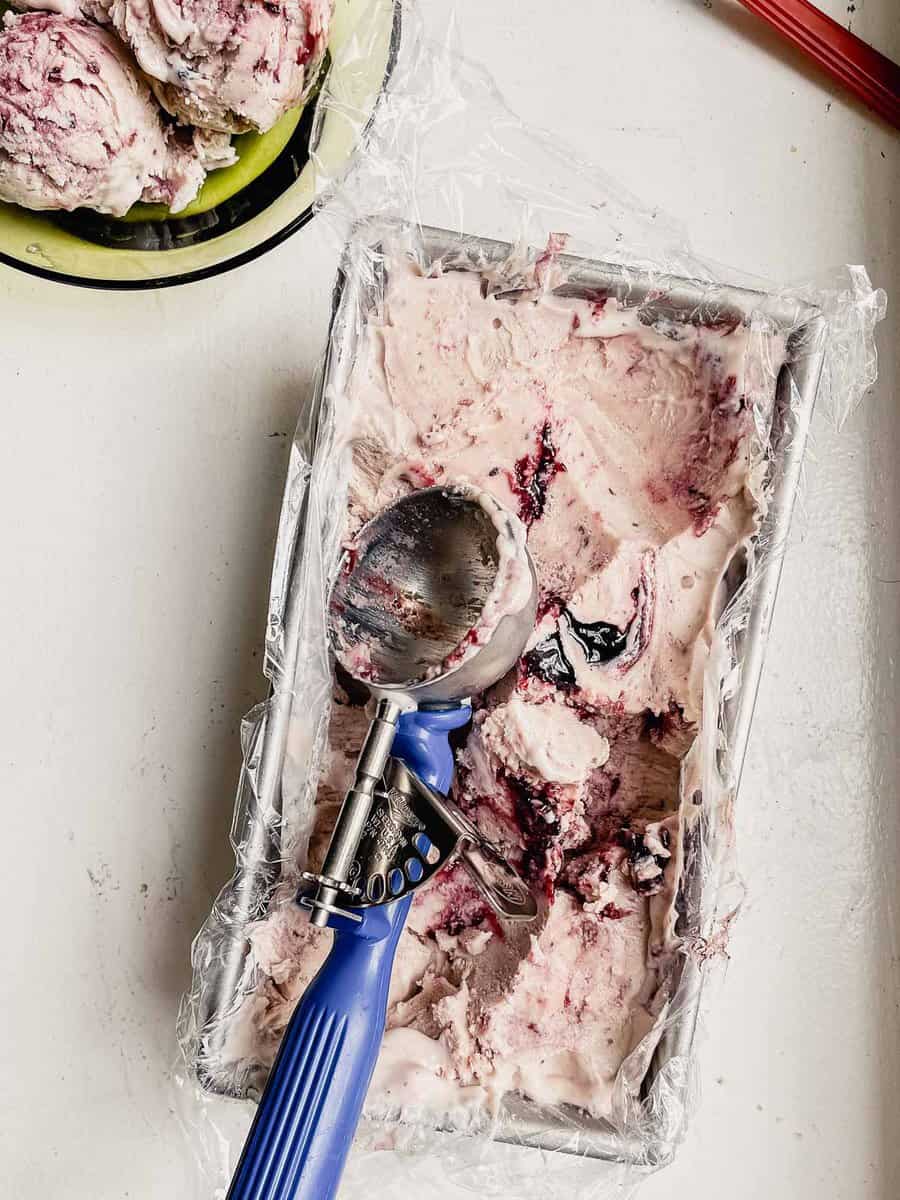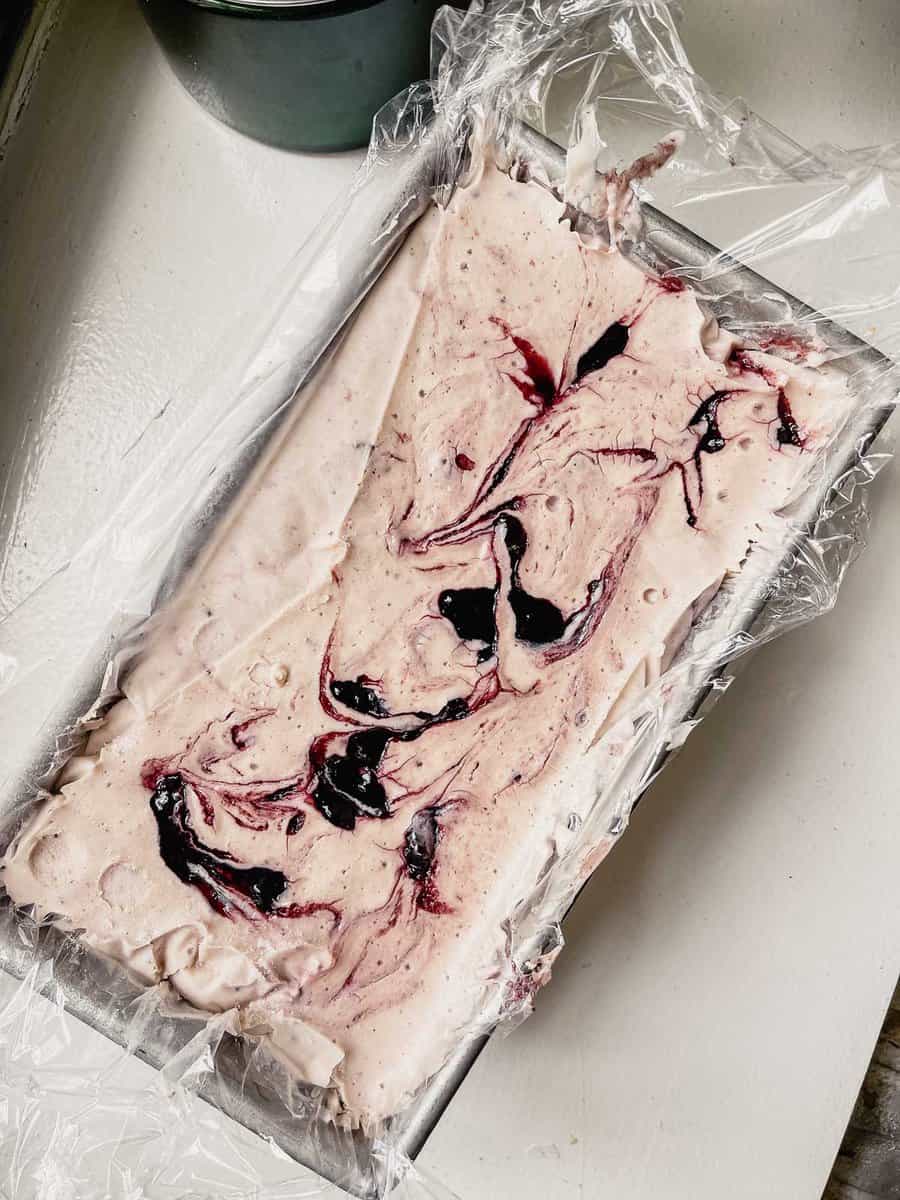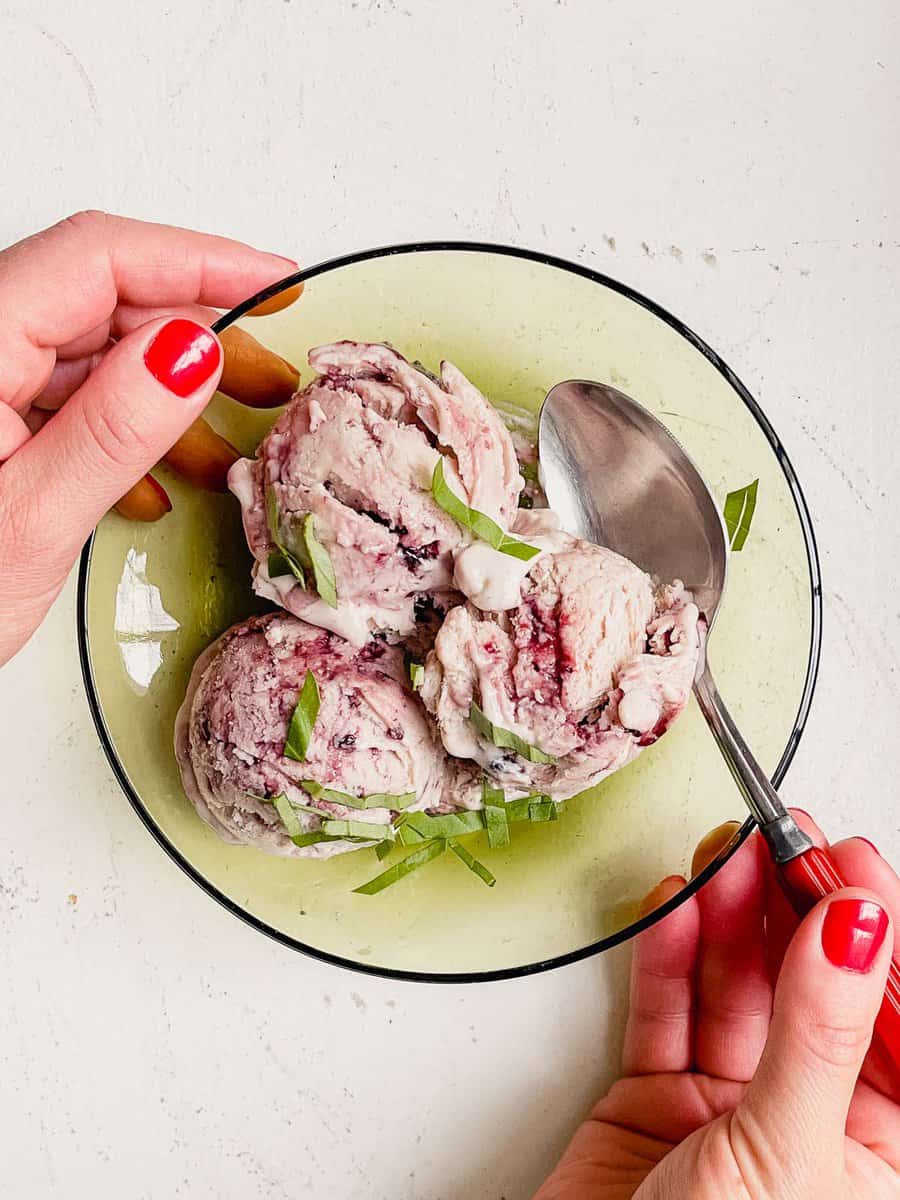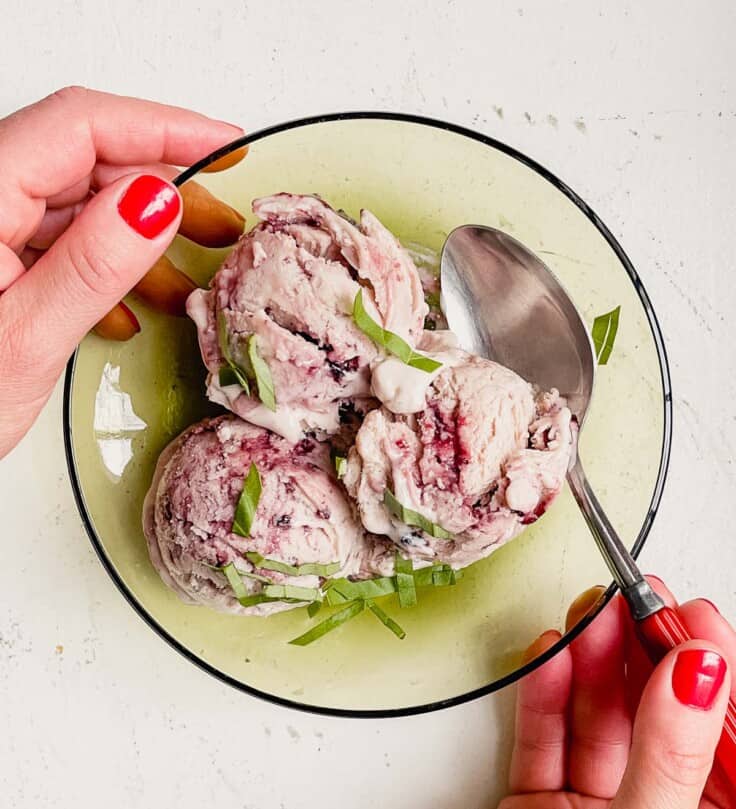TikTok’s Viral Cottage Cheese Ice Cream. You’ve seen it, but have you tried it? According to social media, cottage cheese ice cream is a convincing substitute for the real thing while being high in protein, low in sugar, and lower in fat. I gave it my best shot—here’s what I thought.
Cottage cheese is undoubtedly having a moment—it’s one of the most popular ingredients on TikTok and Instagram these days thanks to its high protein content (also having a moment). No shade, I’m a long-time fan of cottage cheese—see our Cottage Cheese Pancakes and Cottage Cheese Cake. Or this Cottage Cheese Board we made in response to the butter board phenomenon. It’s also a great base for creamy dressing (we made a green goddess) and is perfect for cheesy fillings like in our Cottage Cheese Lasagna.
But ice cream? I was skeptical but not pessimistic. If I was going to make cottage cheese ice cream, I was going to give it my best shot. I wanted it to be luscious and sweet enough to replace the real thing.

My Cottage Cheese Ice Cream Recipe
Most no-churn ice cream recipes are made by combining whipped cream and sweetened condensed milk. So instead of using honey, I figured why not go with a tried and true ingredient that adds sweetness and creaminess. Was it the right decision? Not necessarily. You can use sweetened condensed milk or honey and you’ll get a similar result.
Ingredients Test 1
- 32 ounces whole milk cottage cheese
- ¾ cup sweetened condensed milk
- ¼ cup blackberry jam
- 4 basil leaves
- Pinch kosher salt
Instructions: Test 1
For the first recipe test I simply combined all of the ingredients in a food processor and blended it until completely smooth.
I then transferred the mixture to a plastic-lined loaf pan and froze until solid.
The results: a barely scoopable, icy “ice cream.” Tastes good but not a good substitute for ice cream.
Ingredients Test 2
- 32 ounces whole milk cottage cheese
- ¾ cup sweetened condensed milk
- ¼ cup blackberry jam
- 4 basil leaves
- 2 tablespoons high-proof alcohol (such as whiskey, vodka, or gin)
- Pinch kosher salt
- 1 cup heavy cream
Instructions: Test 2
For the first second test I combined all of the ingredients except the heavy cream in a food processor and blended it until completely smooth. I then whipped the cream to stiff peaks and folded it into the ice cream mixture.
I then transferred the mixture to a plastic-lined loaf pan and froze until solid.
The results: slightly more scoopable than test 1 and slightly less icy. Tastes good and better than test 1—but still not a good substitute for ice cream.
Notes: I added a splash of booze in an attempt to inhibit the formation of ice crystals. And I folded in whipped cream to boost the fat content (creaminess) and add some air to an otherwise very dense mixture.

Flavors to Try
- Peanut butter and honey is a classic flavor combo making its rounds on TikTok. Use ¼ cup honey per 16 ounces of cottage cheese. Measure peanut butter with your heart.
- Caramel Chocolate Chip is another favorite flavor combo. Use ¼ cup caramel sauce per 16 ounces cottage cheese. Add as many chocolate chips as you like.
- Make a fruity ice cream by blending in your favorite frozen fruit like mango, banana or peach.
Final Review
My honest thoughts on cottage cheese ice cream: it shouldn’t be made as a no-churn ice cream. Cottage cheese could be a fabulous base for ice cream, but its high water content makes it a very bad choice for a no-churn ice cream.
If you want a “healthy” ice cream, blend up your favorite frozen fruit in a food processor or blender with a splash of cream or dairy-free milk. Voila! It’s delicious. I do this often with bananas and peanut butter or mangos and cream. Or try our Healthy Banana Milkshake.
And if you want a no-fuss no-churn ice cream, make a version of this No-Churn Cherry Ice Cream (substitute the cherry mixture with 1 cup of your favorite jam).
For a really good cottage cheese ice cream, you should churn the cottage cheese mixture in an ice cream maker instead of simply freezing it. Churning will quickly chill down the mixture which creates small ice crystals. The opposite happens when the mixture freezes slowly in a loaf pan.

Tips for Making the Best Cottage Cheese Ice Cream
Ok, so now that you know how I feel about this viral cottage cheese ice cream, let’s talk about ways you can make it better!
If you want a cottage cheese ice cream that’s as enjoyable as the real deal while boasting a high amount of protein, here’s what I would recommend:
- Use a 1:1 ratio of cottage cheese to heavy cream (you’d be safe being a bit heavier handed on the cottage cheese, but be sure to use a good bit of cream).
- You don’t have to use honey. You can use sugar, corn syrup, honey or sweetened condensed milk. A good rule of thumb: add ¾ cup sweetener per 3 cups of dairy used.
- Consider adding some tempered egg yolks. This is a traditional ice cream custard practice. To do this: heat the cream and sweetener in a small saucepan over medium until the sugar has dissolved and the cream is about 175ºF. Remove the cream from heat and slowly whisk the cream into the egg yolks until combined. Then combine all of this with the blended cottage cheese and you’re ready to churn!
- Which brings me to my last and arguably the most important recommendation. Churn cottage cheese ice cream! Let the cottage cheese mixture chill in the refrigerator before you churn it in an ice cream maker. Together, these two steps will quickly chill the ice cream and small ice crystals will form. If you simply pour the mixture into a loaf pan (i.e. “no-churn”) the mixture freezes slowly and large ice crystals are formed.


First of all,.amazing flavor combination, will have to try it. Secondly, I’m kind of bummed because I was looking forward to trying this but it doesn’t seem to be all that. How would you say it compares to frozen yogurt?
It seems really similar to frozen yogurt—just as icy. If you have a good frozen yogurt recipe you like, then I would use that as your guide and add in this flavor combo!